Manufacturing in 2030: The Opportunity and Challenge of Manufacturing Data

As manufacturers move toward building smarter factories with connected machines, the data those systems produce can offer a host of benefits: improved efficiency, better productivity, informed decision-making, value creation and, ultimately, competitiveness. Yet becoming a data-driven business comes with its share of challenges. In this year’s Manufacturing in 2030 Survey, Data Mastery: A Key to Industrial Competitiveness, the NAM’s Manufacturing Leadership Council sheds light on the successes and opportunities for how manufacturers are transforming their operations with data.
Security and privacy concerns: As factories become more connected, cybersecurity becomes a greater imperative. For this reason, survey respondents validated that both data security and data privacy are essential.
- More than 90% of respondents have a formal or partial policy on data security and data privacy.
- About two-thirds of manufacturers have a formal or partial policy on data quality.
- More than 60% have a corporate-wide plan, strategy or guidelines for data management, but only 15% follow the plan in its entirety.
How data is used: As manufacturers advance along their M4.0 journey, data is becoming their lifeblood, driving insights and decision-making. Yet the survey revealed a gap between available data sources and their utilization, a notable area for improvement as the industry looks toward the future.
- Spreadsheets are still king: 70% of manufacturers enter data to them manually, and 68% still use them to analyze data.
- 44% of manufacturing leaders say the amount of data they collect is double what it was two years ago, and they anticipate it will triple by 2030.
- While nearly 60% of manufacturers use data to understand and optimize projects, there is a shift toward using data to make predictions about operational performance, including machine performance, in the next decade.
Business impact: Most manufacturers leverage data to find ways to save money or promote business growth. However, less than half have a good understanding of the dollar value of their data.
- Only about 25% of manufacturers have high confidence that the right data is being collected.
- Most manufactures have only moderate confidence in their analytic capabilities.
- Top challenges include data that comes from different systems or in different formats (53%), data that is not easy to access (28%) and lack of skills to analyze data effectively (28%).
- However, despite those challenges, 95% of manufacturers say data makes for faster and/or higher-quality decision-making.
The bottom line: An overwhelming majority of manufacturers (86%) believe that the effective use of manufacturing data will be “essential” to their competitiveness. But to realize data’s potential, manufacturers must figure out how to organize and analyze their data effectively, ensure that their data is trustworthy and align their business strategy closely with their data strategy.
Explore the survey: Get a deeper look at the current state of data mastery in manufacturing. Click here to download your copy.
In It for the Long Haul: C.H. Robinson Takes on Sustainability
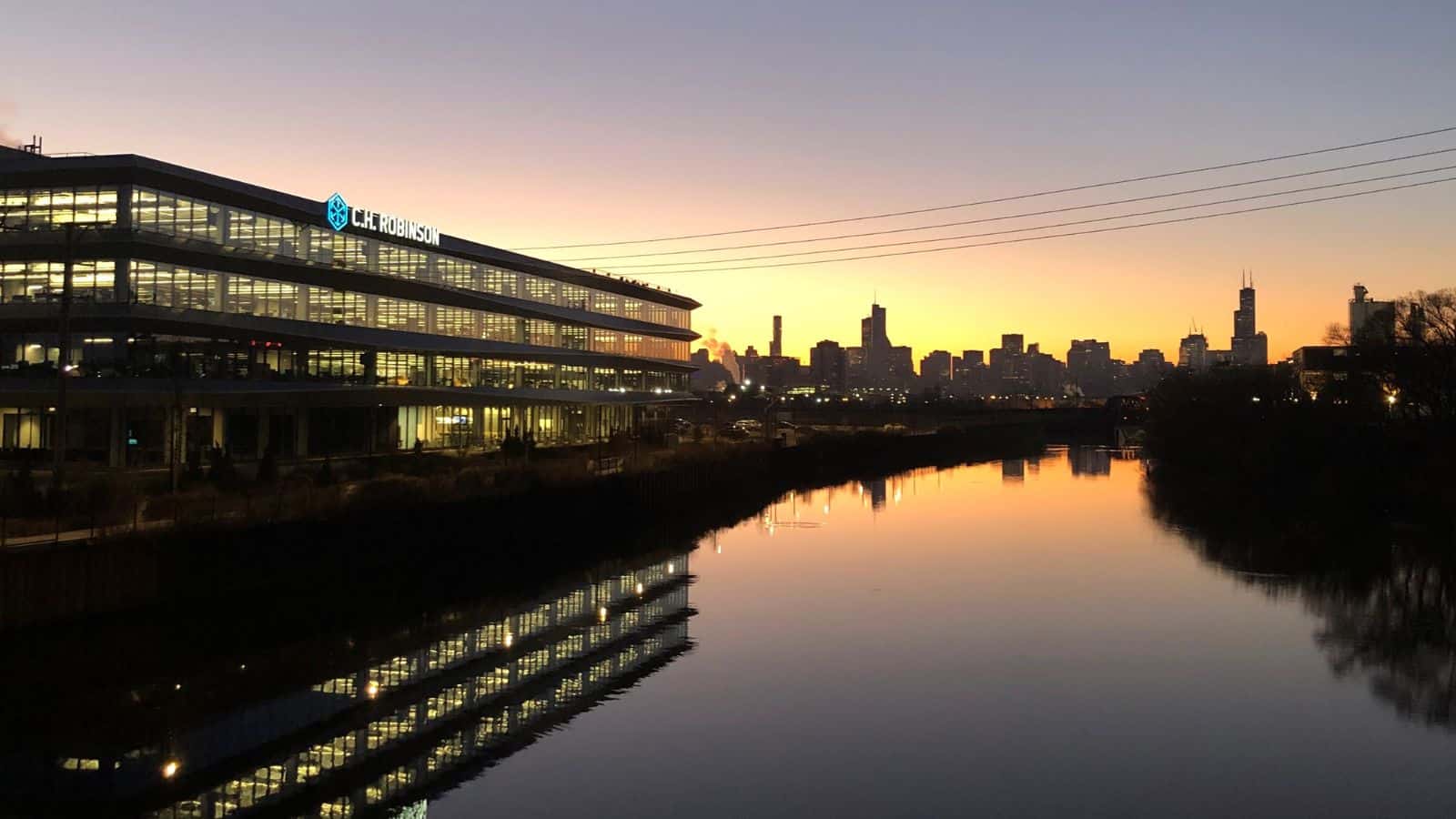
It’s not every day that an international company meets an ambitious sustainability goal two years early. But last May, that’s exactly what happened at 119-year-old transportation logistics provider C.H. Robinson.
- The goal under discussion: a company-wide reduction in intensity of Scope 1 and 2 emissions—those emissions generated by the company’s own operations—of 47% (more than the 40% targeted). C.H. Robinson had previously calculated meeting the objective by 2025.
Simple but effective: “Most of it was looking at where we could find inefficiencies” and correcting them, said C.H. Robinson Vice President of Environment, Social and Governance Rachel Schwalbach. Some changes came from suggestions “our own employees brought forward: LED lighting, responsible use” of electricity.
- Efforts also included a marked increase in the company’s use of renewables generally. From 2019 to 2023, C.H. Robinson renewable-energy purchases rose 40%.
Not an either/or proposition: The Eden Prairie, Minnesota–based company—which solves logistics challenges for clients through freight forwarding and other innovative transportation solutions—is proof positive that businesses don’t have to choose between good environmental stewardship and profitability.
- In fact, “sometimes the sustainable option is actually the less expensive option,” Schwalbach told the NAM. “C.H. Robinson is working with suppliers every day to drive out waste, and often that’s been because we’ve looked at it through a lens of cost savings or time reduction. Now it’s also through the lens of sustainability.”
- What’s more, “if you’re approaching sustainability right, it should be tied to your overall business strategy. Sometimes it’s as simple as making sure you’re compliant with rules and regulations” as you meet sustainability requirements.
A competitive advantage: Reducing the footprint of operations can be a competitive advantage for manufacturers, too.
- “We get asked about sustainability by nearly all our stakeholders, so it really has to be a part of strategic decision making across the business,” Schwalbach continued. “Our shippers are also getting asked about [sustainability] by their investors and customers. People across the business are thinking about it, so it’s [to our advantage to] make sure it’s integrated across all areas.”
No business is an island: Businesses must keep in mind that sustainability is a shared interest, and the environment’s health is best served by teamwork, not isolated efforts, according to Schwalbach.
- “As companies continue to put big [sustainability] goals out there, I cannot emphasize enough the need for collaboration across industries, as clichéd as it sounds,” Schwalbach said. “Having people who are willing to come to the table and say, ‘Hey, let’s figure this out together,’ is going to be pretty critical.”
- For C.H. Robinson, that means engaging with customers, carriers and a broad range of other stakeholders.
Supporting climate-friendly practices: The right moves by policymakers can also help support the private sector’s sustainability efforts.
- “As we’re looking increasingly at alternative fuels and electric vehicles here in the U.S., we need an electric grid that can support the transition to a lower-carbon economy,” Schwalbach said. “Continuing to invest in [strengthening] the grid will help us invest in the right technologies. We need to be able to move forward quickly in a way that doesn’t cause disruption to the supply chain and transportation.”
- Companies want clarity around regulations, too. “There are so many [regulations] coming out right now, and companies want to know, ‘How do I get the right [climate-related] data? How do I make sure the data are accurate?’”
In for the long haul: So what’s next for C.H. Robinson? A continued focus on conservation, for one thing.
- “You meet your goals, and that’s really exciting, but there’s no time to sit around,” Schwalbach said, adding that the company is now in the process of figuring out “what new sustainability goals will look like for carbon reduction.”
- Ultimately, those goals will be met by ensuring a commitment to the environment remains a company-wide focus, she told us.
- “Doing sustainability well means it’s integrated. C.H. Robinson is a 119-year-old company, and sustainability is about making sure we’re going to be successful for another 119 years.”
Lockheed Martin to Aid in Missile Production
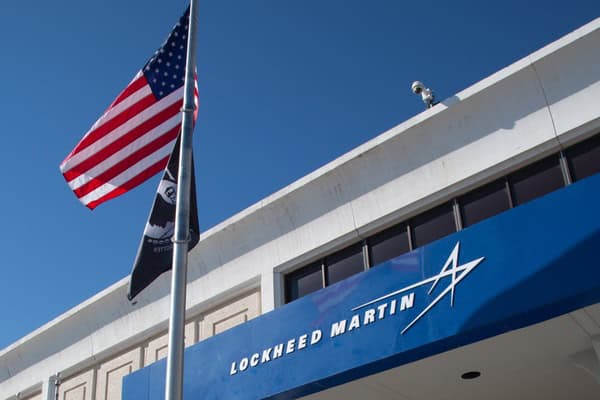
Lockheed Martin is helping strengthen the U.S. defense industrial base (Zacks.com).
What’s going on: The defense contractor’s Space Systems business unit recently finalized a modification contract deal to “provide systems engineering, test planning and long lead material to support missile production” to the U.S. Navy’s Strategic Systems Programs.
- The contract, valued at $99 million, is expected to be finished by Feb. 2, 2027.
Why it’s happening: “Nations are reinforcing their military capabilities to strengthen their defense structure in the growing threat environment.”
- Spending by countries on defense capabilities—including missiles—has picked up in recent years, following Russia’s invasion of Ukraine (Breaking Defense).
- “Lockheed’s weapon systems include precision strike weapons with long standoff ranges to keep pilots and aircraft out of harm’s way.”
Why it’s important: The growing number of global threats now confronting the U.S. and its allies mean we must be prepared, and manufacturers such as Lockheed Martin are a critical part of the equation.
Announcing the Winners of the 2024 Manufacturing Leadership Awards

The names are in! The Manufacturing Leadership Council—the NAM’s digital transformation division—is pleased to announce the winners of the 2024 Manufacturing Leadership Awards.
Now in its 20th year, the awards competition recognizes outstanding manufacturing companies and their leaders for groundbreaking use of advanced manufacturing technology.
“The class of 2024 should indeed be proud of their achievements in advancing the digital model of manufacturing,” said MLC Founder, Vice President and Executive Director David R. Brousell. “The awards reflect the truly incredible amount of innovation taking place in all sectors of the industry.”
Manufacturing Leader of the Year: Cooley Group President and CEO Daniel Dwight is the 2024 Manufacturing Leader of the Year.
- Dwight, who also serves on the MLC’s Board of Governors and is a member of the Executive Committee of the NAM Board of Directors, has overseen a significant turnaround in Cooley’s business performance through digital transformation, with a commitment to investing in smart factory technologies and developing a digital-ready workforce and business culture.
- In addition, the MLC named Cooley Group the 2024 Small/Medium Enterprise Manufacturer of the Year.
Large Enterprise Manufacturer of the Year: Intertape Polymer Group is the 2024 Large Enterprise Manufacturer of the Year.
- The award recognizes IPG’s achievements in digital transformation, including technology integration and workforce training.
- The company has also made noteworthy strides in sustainability through reductions in both energy usage and waste.
More honors: The MLC also announced winners in 11 project and individual categories, as well as the winners of the Manufacturing in 2030 Awards. The latter are given to projects with particularly forward-thinking innovations.
- The MLC honored all finalists and winners at the Manufacturing Leadership Awards Gala last night in Marco Island, Florida. A complete list of finalists and winners is available here.
Nominations for the 2025 season of the Manufacturing Leadership Awards will open on Sept. 16, 2024. More information is available here.
Rio Tinto Seeks to Meet Growing Copper Appetite

The demand for copper is skyrocketing—and global mining company Rio Tinto is powering forward full throttle to meet it (CNBC).
What’s going on: “The red metal, considered a barometer for economic health, is a vital component for the construction and defense industries as well as a key component in electric cars, wind turbines and the power grid.”
- However, current mines and in-the-works projects “will meet only 80% of copper needs by 2030, according to the International Energy Agency.”
- “There’s this growing consensus that demand fueled by the energy transition is going to outstrip supply, and that’s why analysts say we are simply not going to have enough of it,” said CNBC Markets Reporter Pippa Stevens in a recent CNBC video. “And copper really is the backbone of decarbonization goals.”
The challenges: Copper mining is difficult and expensive—and it takes 10 to 15 years to build each mine, Rio Tinto CEO Bold Baatar told CNBC.
A beneficial metal: Copper is the most economical conductor available, and directly and indirectly, it supports more than 395,000 U.S. jobs and more than $160 billion in economic output.
Behind the scenes: CNBC went behind the scenes at Rio Tinto’s Kennecott operations in Utah, where “about 200,000 metric tons of copper are produced annually.”
- There, Rio Tinto is increasing its open-pit mining operations and has started an underground project to mine higher-grade ore.
- Kennecott is unique for its smelter and refinery, “where the ore is processed into almost pure copper.”
Permitting challenges: Another of Rio Tinto’s projects, the Resolution Copper mine in Arizona, has the potential to power up to 25% of U.S. copper demand—but it has been mired in a regulatory morass for the better part of two decades.
- “The last hard-rock mine that was permitted was in 2008,” Rio Tinto Copper Chief Operating Officer Clayton Walker told the news outlet. “We’ve been working on the Resolution Mine for about 18 years.”
Independence is possible: “Theoretically, there are enough reserves in the U.S. that we could become independent for our copper needs,” Walker continued. “It’s just, how do we do that? How do we get the permits?”
What the NAM is doing: The NAM has been engaging directly with the Biden administration and members of Congress through meetings and briefings at NAM headquarters to push for comprehensive permitting reform.
- In addition, the NAM, along with members of the NAM’s Council of Manufacturing Associations and Conference of State Manufacturers Associations, last summer launched Manufacturers for Sensible Regulations, a coalition that seeks to speed up the frequently slow, arduous federal permitting process for energy infrastructure projects and address the large number of regulations being churned out by the federal government.
NAM Gets New International Policy Lead

Former Assistant U.S. Trade Representative for World Trade Organization and Multilateral Affairs Andrea Durkin has joined the NAM as vice president of international policy, the NAM announced Monday.
An experienced leader: “Andrea brings a wealth of expertise to the job, with more than three decades of service in both the public and private sectors,” NAM President and CEO Jay Timmons said. “As a leader in international trade negotiations, her deep understanding of international policy will enhance the NAM’s strategic objectives significantly as we continue to build off of successful engagements with our counterparts across Europe and the North American continent.”
- Durkin is a foremost U.S. expert on international policy, having worked in both Republican and Democratic presidential administrations. In her most recent role, at the USTR in the Executive Office of the President, she negotiated policy regarding issues before the WTO. She also led the operation of committees on technical barriers to trade, industrial subsidies, trade facilitation and more.
- Her negotiations credentials include free trade agreements in the Western Hemisphere and the trade-related portions of United Nations’ multilateral environment and public health agreements.
A teacher and an entrepreneur: An adjunct professor for 17 years, Durkin taught international trade and investment policy at Georgetown University’s Master of Science in Foreign Service program.
- She is also the founder of Sparkplug, LLC, a consulting firm that specialized in advising corporate affairs teams and think tank leaders on organizational strategy.
Novonesis Lets Nature Guide Sustainability Plans
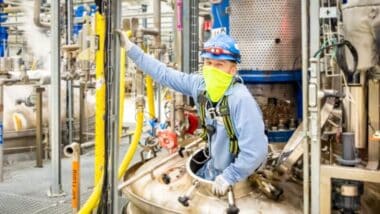
When it comes to good environmental stewardship, Novonesis takes its cue from the natural world itself.
“We are inherently sustainable because we draw from nature,” said Novonesis Senior Vice President of Planetary Health Biosolutions Rene Garza. “As biology matures, we find that nature has evolved to be an efficient utilizer of every single resource out there.”
Back to basics: It’s the perfect model for the newly formed Lyngby, Denmark–headquartered biosolutions firm, the product of a January merger between two Danish legacy companies: enzyme and microbial technology firm Novozymes and bioscience supplier Chr. Hansen.
- The portfolio of Novonesis—which is a combination of the Greek words for “new” and “beginning”—includes enzymes, microbes, novel vitamins and other naturally derived offerings.
- The business has customers across more than 30 industries: food and beverages, animal health and nutrition, energy, fine chemicals, dietary supplements, household care, plastics, plant health and more.
An early adopter: Legacy firm Novozymes set its sights on sustainable business practices more than two decades ago. In 2002, it became the first company in the world to publish a triple bottom-line integrated report.
- “We recognized early on that resources are finite, and the need to do more with less is part of ensuring a better quality of life,” Garza said of the company’s decision to undertake the annual report, a method of stocktaking on sustainability activities using three “bottom lines”: profit, people and planet. “We realized we’re not just here to generate money, but also to create an impact on society and our environment.”
Big goals: That’s why Novonesis has set lofty aims for itself (and is meeting them).
- Firmwide targets include carbon net neutrality by 2050, as well as a 75% reduction in emissions from its own operations and a 35% reduction in emissions from its supply chain by 2030.
- How is it doing all this? Innovation and persistence, according to Garza. “We want to improve our efficiency by as much as we can, and we do this by making improvement to our hardware—pump replacements, reengineering [of] our microorganisms. We also source renewable energy.”
- In fact, Novonesis is on track to source 100% of its energy from renewables by next year. Between 2018 and 2022, it reduced absolute emissions by 63% while increasing revenue.
Water, too: Novonesis knows how important water use is in the overall sustainability picture.
- The company is piloting a reverse-osmosis filtration system at its North America headquarters in Franklinton, North Carolina, that lets it recycle and reuse water. The program, scheduled for full operationality by next year, is going so well there are plans to replicate it at other Novonesis facilities worldwide.
- And at the company headquarters in Denmark, “we have been able to recycle 58 million liters [of water]—the equivalent of 23 Olympic-size swimming pools,” Garza reported.
What government can do: Novonesis and other manufacturers are making great strides in sustainability, but having the right policies in place at the federal level would make it easier for them to do more with less, Garza continued.
- “We need regulatory reform,” he told the NAM. “Federal regulations, if done well, really can drive innovation, particularly in biotechnology. … The government should [also] invest in pilot and demo scale fermentation capacity to allow startups to scale up.”
- The U.S. has the largest concentration of startup companies in the world, he went on, but there is now a “valley of death” between discovery and commercialization of innovations in biology, which federal funding could help remove.
- Finally, manufacturing in the U.S. needs the reinstatement of pro-growth policies from the 2017 Tax Cuts and Jobs Act, including 100% expensing for research and development costs and accelerated depreciation for capital investments.
Stakeholder education: Getting more people aboard the sustainability train is doable—but it will require continued education campaigns.
- “We need long-term thinking [and] to encourage stakeholders to prioritize the long-term over short-term gains,” Garza said. “Sustainability is about balancing immediate and future needs.”
IRI Announces 2024’s Top Innovator Finalists

The Innovation Research Interchange has announced the finalists for this year’s IRI Innovation Excellence Awards.
What’s going on: The honors given by the IRI—the NAM’s innovation arm—pay tribute to organizations and individuals whose outstanding vision and tireless pursuit of excellence are having a positive impact on lives today and shaping the industries of tomorrow. Honorees come from companies of all sizes and industries.
The categories: Awards are given in five categories, three to companies and two to individuals. They are as follows:
- IRI Innovation Leadership Award (individual)
- IRI Promising Young Innovation Professional Award (individual)
- IRI Excellence Award for Innovation in Sustainability (company)
- IRI Excellence Award for Outstanding Innovative Culture (company)
- IRI Excellence Award for Digital and Technological Innovation (company)
Who participates: Each year, nominees comprise innovators who are leveraging technology to enhance operational performance at their companies or sustainability and fostering a collaborative workplace culture that celebrates innovation.
- High-performing leaders who drive sustainability initiatives are also recognized, and consultants and university partners working on exciting innovation projects with a company are eligible for nomination, too.
Why they’re important: In addition to building team unity and encouraging executive leadership to invest further in innovation, the awards give companies the chance to revisit the successes, challenges and lessons learned throughout their innovative projects.
- Selection as a finalist shows customers, prospects and partners that a company or individual is at the forefront of innovation.
Attend the celebration: Winners will be announced May 16 during the Innovation Celebration and Reception at the Innovators Summit in Boston. Celebration admission is included with summit registration.
About the IRI: The IRI offers insights, case studies, research, benchmarks and strategic connections—all built around a set of innovation growth drivers as determined by members annually. Learn more about the IRI here.
Norfolk Southern Pivots to Serve Customers After Bridge Collapse
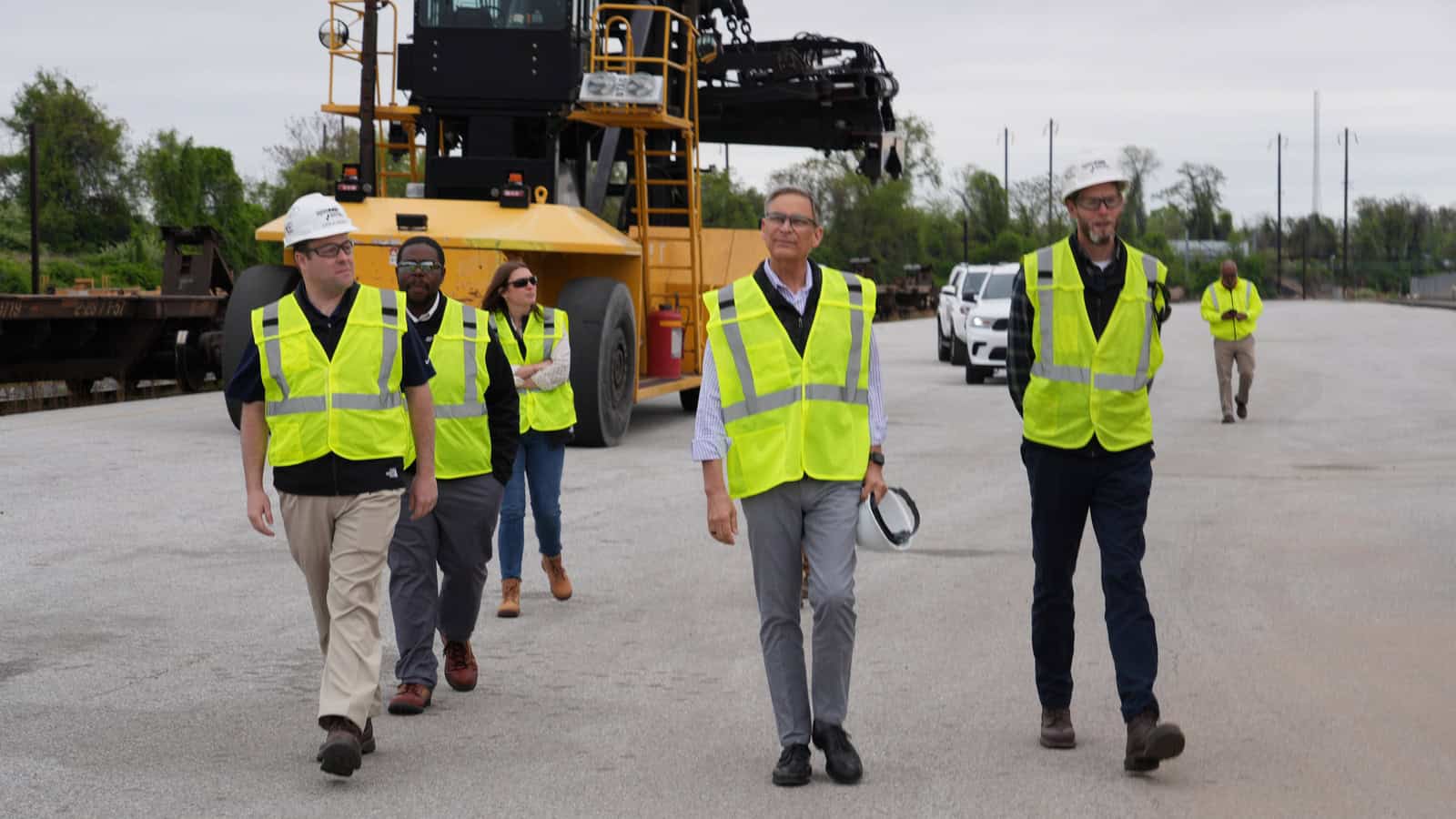
It’s been nearly a month since a cargo ship hit the Francis Scott Key Bridge in Baltimore, Maryland, resulting in six deaths, the destruction of the bridge and the shuttering of an important East Coast port.
- But thanks to hard behind-the-scenes work by Norfolk Southern railway since the accident, customers aren’t feeling the supply chain pinch the way they otherwise would.
What happened: NAM President and CEO Jay Timmons, along with an NAM delegation, visited the Port of Baltimore last Friday to tour Norfolk Southern’s operations there. The port is the largest for vehicle shipping in the U.S. and was the 17th biggest in the nation by total tonnage in 2021.
- On March 26, the day the Singapore-flagged Dali cargo vessel hit the Key Bridge, Norfolk Southern—which moves 7 million carloads of cargo annually—began strategizing ways to support increased shipping volumes on behalf of its customers. And it’s been doing that ever since.
- “We often say the weight of the world moves on rail … and it’s true,” Norfolk Southern Chief Marketing Officer and NAM board member Ed Elkins told the NAM during the site visit. “Our ability to serve the market through temporary disruption is really a demonstration of our strategy in action, where we leverage the experience of our railroaders and the strength of our franchise to find a Better Way to provide safe, reliable service.”
Quick adaptation: Norfolk Southern’s strategy for adapting to the closure of Baltimore’s port has included:
- The launch early this month of a dedicated new service to move freight between the ports of New York and New Jersey and Baltimore’s Seagirt Marine Terminal;
- The facilitation by the railway’s Triple Crown Services Inc.—a door-to-door East Coast truckload transit network—of a dedicated intermodal service for cargo owners who require door-to-door service;
- The use of “Go Teams,” groups of employees ready for rapid response service and created by Norfolk Southern during the pandemic; and
- Regional collaboration with the Port of Virginia to leverage service points including the Virginia Inland Port and others.
Reopening: The Port of Baltimore could be back to full functionality by the end of May, the U.S. Army Corps of Engineers said earlier this month.
- “The NAM will stay in close coordination with our members regarding supply chain impacts stemming from the collapse of the Francis Scott Key Bridge,” said NAM Director of Transportation, Infrastructure and Labor Policy Max Hyman. “We also remain engaged with leading federal officials on recovery efforts and will continue to support critical infrastructure projects such as the Port of Baltimore.”
Baltimore Port Could Be Fully Operational by May’s End
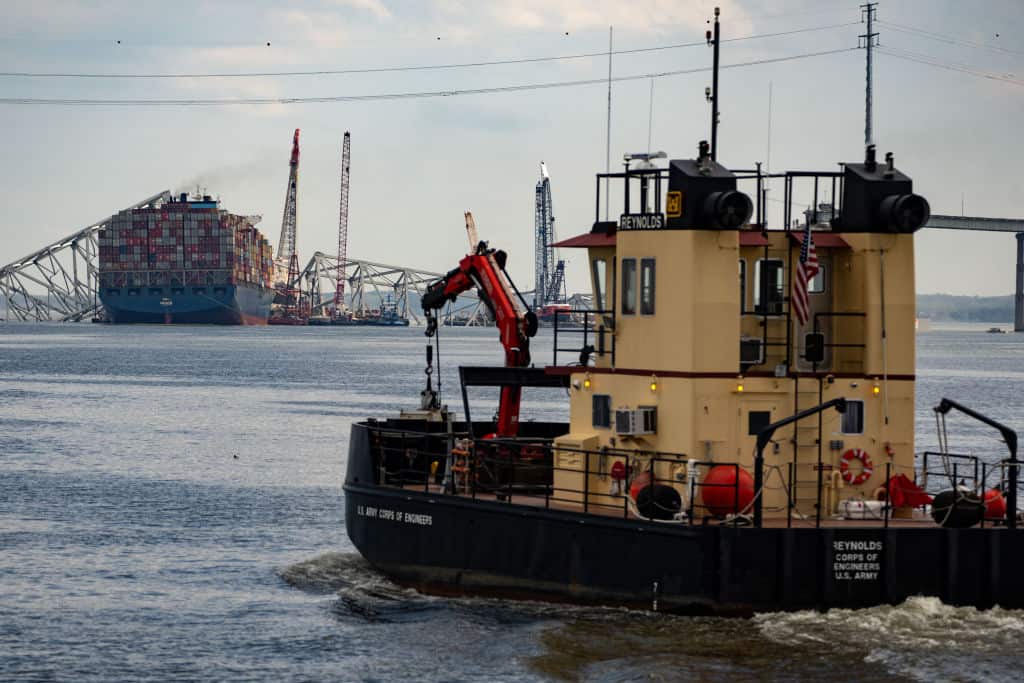
The Port of Baltimore could be reopened fully by the end of May, according to POLITICO.
What’s going on: “The U.S. Army Corps of Engineers said it is aiming to reopen the channel leading to the Port of Baltimore by the end of May, a timeline [Maryland Gov. Wes] Moore confirmed Sunday [on CBS’ “Face the Nation”] is ‘realistic.’”
- The port has been closed since March 26, when a Singapore-flagged cargo ship hit the Francis Scott Key Bridge, destroying the bridge and killing six construction workers.
- While Gov. Moore did not give an estimate of the cost to rebuild the bridge, the closure is costing the port about $15 million a day in economic activity, the Baltimore Sun reports.
- And business analytics group Dun & Bradstreet has estimated the weekly economic impact of the closure on trade at about $1.7 billion, according to The Wall Street Journal (subscription).
“Absolutely committed”: The governor’s remarks came just days after the Office of Management and Budget urged Congress to authorize covering the full cost of rebuilding the bridge, according to Punchbowl News.
- “My administration is committed—absolutely committed to ensuring that the parties responsible for this tragedy pay to repair the damage,” President Biden said during a visit to the site of the bridge on Friday. “But I also want to be clear: We will support Maryland and Baltimore every step of the way to help you rebuild and maintain all the business and commerce that’s here now.”
The NAM’s view: “The NAM applauds the bipartisan efforts of federal and state officials to reopen the Port of Baltimore and rebuild the Key Bridge,” said NAM Director of Transportation, Infrastructure and Labor Policy Max Hyman. “It’s important to note that reforming our broken permitting system would significantly speed up projects such as this, returning much-needed economic activity and jobs to communities throughout the U.S.”
If you’ve been affected: Manufacturers affected by the bridge collapse and port disruption can access vital resources at the new online Resources and Info Hub of NAM state partner the Maryland Chamber of Commerce.
- The chamber and its partners are committed to helping manufacturers navigate this disruption and get on the path to recovery.
- Share your thoughts on the disaster and recovery efforts by filling out this survey.
